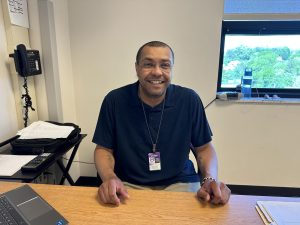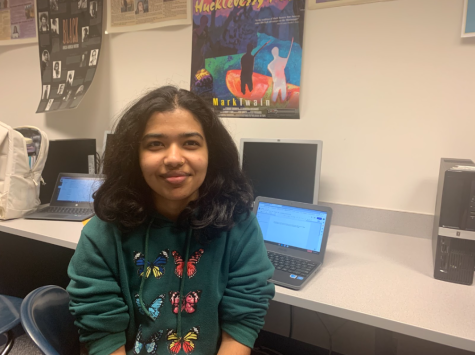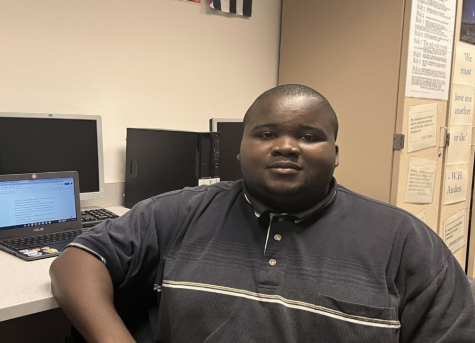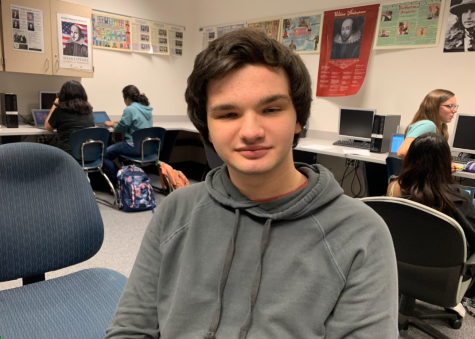Black at Baldwin: Students report positive experiences, with room for growth
May 31, 2023
For senior Aluk Doup, the experience of being a Black high school student at Baldwin has been substantially positive.
“I feel like everyone is very welcoming,” Doup said. “As I got older, most people became more accepting.”
Black students make up 6 percent of Baldwin High School’s student body. Given that the school also has a significant refugee population, having a welcoming environment has been a necessity, and many Black students say they have had mostly positive experiences.
“My experience has been good and I’ve been treated very well by my teachers,” senior Devaylin Diggs said.
Baldwin’s clubs, sports teams, and extracurricular activities provide some of that welcoming spirit. Sophomore Da Quain Chastanet is one of several students who talked about having positive experiences through the school’s clubs.
“I feel more connected with the community through things like Baldwinaires and choir,” he said.
Senior Brooklyn Williams also finds extracurriculars to be helpful in finding acceptance.
“I’ve been in a lot of clubs at school and I feel really connected to everyone else since we are all going towards the same goal in these clubs,” she said.
Principal Shaun Tomaszewski supports the role of Baldwin clubs and would like to see more.
“Every year I have been here, there has been a desire from Black upperclassmen wanting a Black student union, and I’m always super supportive of those efforts because I think that is an essential voice in the student body that is not sufficiently heard,” Tomaszewski said.
Junior Mandy Wu runs an inclusive extracurricular activity called POC Club, sponsored by history teacher Katie Temme. The group is open to students of all identities and backgrounds. Senior Ngabile Liese finds comfort in the group’s diversity.
The POC Club “makes it easier for me to connect with other people and their experiences,” Liese said.
While the experience of Black students at Baldwin is primarily positive, there have been instances of racism and discrimination they have faced.
Junior Mwango Kasuba recalls a time when a student used a racial slur.
“We were all talking in computer class, and while I was playing a song for my friend, this kid beside us started rapping the n-word. I was so confused,” he said.
Williams recalls becoming more socially conscious in her freshman year of high school after being subject to racism in middle school.
“In middle school, I was called racial slurs and I didn’t realize how bad it was until I got into activism during the pandemic,” Williams said.
Senior Michael Phiri, who recently switched to Baldwin’s Cyber program, said some students at Baldwin don’t understand the significance of the language that they use concerning Black people.
“Some people are too simple-minded to realize what they’re saying is ignorant,” Phiri said. “I hear and see some people say slurs so casually and it shocks me.”
Tomaszewski’s experience in disciplining students in incidents of racism has given him the opportunity to address these issues in a purposeful manner.
“When I have conversations with kids who get in trouble for these racist behaviors, I always approach those conversations from an educative perspective,” Tomaszewski said. “I try to encourage students to confront their own biases.”
One thing that many Black students agree upon is that more classroom discussions regarding race are needed.
Kasuba looks back on an incident that occurred after the 2020 murder of George Floyd and the Black Lives Matter protests that followed.
“I remember walking into history class and this girl kept asking me if I liked her Blue Lives Matter hoodie the school year after the 2020 protests, trying to get me to react,” Kasuba said.
Doup said Baldwin’s classes should have discussed Floyd’s murder and the protests.
“Teachers never really talked about the protests or police brutality, which made it feel like it was non-existent,” Doup said.
Kasuba believes there needs to be more discussion around real-world issues.
“I wish we would talk about subjects like the protests and have more conversations, even just to see other people’s honest thoughts,” Kasuba said.
Phiri agreed.
“We need education focusing more on Black issues,” Phiri said.
Social Studies Department Chair Katie Temme acknowledges the difficulty of classroom discussions regarding race.
“It’s tough, but it’s a discussion that needs to happen. So if we are talking about something that’s happened historically, and can relate it (to current events), we do. It makes it not as scary, to give some historical context,” she said.
Temme said classroom discussions involving race do take place.
“In our department, we think it’s very important to give the Black experience to our White students and our students of color, so that there is an understanding for students of all races,” Temme said. “In our U.S. history classes, 9th and 11th grade, there is a large focus on the Black experience from slavery to civil rights.”
English Department Chair Dr. Daniel Harrold said English teachers recognize the importance of including Black voices in the curriculum.
“There’s always the danger of an echo chamber if you only teach what you have been taught or what you have heard of. You won’t get quality stuff. You are only getting the best if you take the widest possible starting point,” he said. “It’s important to be intentional in recognizing accidental bias or accidental limitations.”
As a particularly apt example of such inclusive literature in the curriculum, Harrold cited The Ballad of Black Tom, a novella written by the Black author Victor LaValle. It reinterprets and criticizes science fiction writer H.P. Lovecraft’s The Horror at Red Hook, an older tale that is often criticized for its overt racism.
There are also positive signs in the school community. For example, Tomaszewski appreciates the awareness he sees among POC students in the school.
“The glimmers of activism I have seen on the part of students of racial minorities give me hope that this narrative is at least alive and present,” Tomaszewski said. “The challenge is with getting these teenagers to the point where they actually carry that idea across the finish line into something sustainable that actually comes to fruition. And that’s been the piece that has been missing.”
While Williams has definitely seen improvements, she doesn’t think racism has been eliminated yet.
“I feel like as I’ve grown up, problems with racism have lessened. People did not really understand the severity of what they were saying to me and other Black people,” Williams said. “It’s getting better now but I think there can still be improvement, starting with more pushback on racism,” Williams said.







